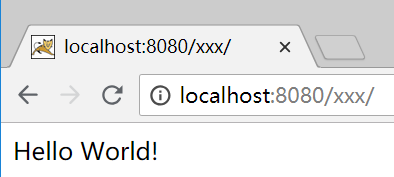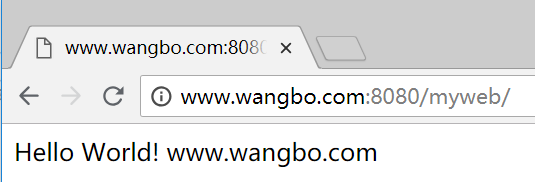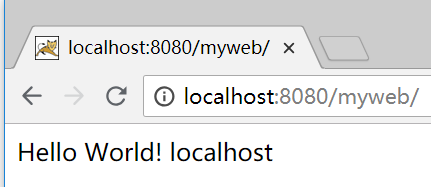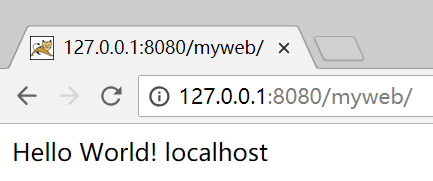Tomcat 的 server.xml 文件详解
文件内容解读
<?xml version="1.0" encoding="UTF-8"?>
<!--
Licensed to the Apache Software Foundation (ASF) under one or more
contributor license agreements. See the NOTICE file distributed with
this work for additional information regarding copyright ownership.
The ASF licenses this file to You under the Apache License, Version 2.0
(the "License"); you may not use this file except in compliance with
the License. You may obtain a copy of the License at http://www.apache.org/licenses/LICENSE-2.0 Unless required by applicable law or agreed to in writing, software
distributed under the License is distributed on an "AS IS" BASIS,
WITHOUT WARRANTIES OR CONDITIONS OF ANY KIND, either express or implied.
See the License for the specific language governing permissions and
limitations under the License.
-->
<!-- Note: A "Server" is not itself a "Container", so you may not
define subcomponents such as "Valves" at this level.
Documentation at /docs/config/server.html
-->
<Server port="8005" shutdown="SHUTDOWN">
<Listener className="org.apache.catalina.startup.VersionLoggerListener" />
<!-- Security listener. Documentation at /docs/config/listeners.html
<Listener className="org.apache.catalina.security.SecurityListener" />
-->
<!--APR library loader. Documentation at /docs/apr.html -->
<Listener className="org.apache.catalina.core.AprLifecycleListener" SSLEngine="on" />
<!-- Prevent memory leaks due to use of particular java/javax APIs-->
<Listener className="org.apache.catalina.core.JreMemoryLeakPreventionListener" />
<Listener className="org.apache.catalina.mbeans.GlobalResourcesLifecycleListener" />
<Listener className="org.apache.catalina.core.ThreadLocalLeakPreventionListener" /> <!-- Global JNDI resources
Documentation at /docs/jndi-resources-howto.html
-->
<GlobalNamingResources>
<!-- Editable user database that can also be used by
UserDatabaseRealm to authenticate users
-->
<Resource name="UserDatabase" auth="Container"
type="org.apache.catalina.UserDatabase"
description="User database that can be updated and saved"
factory="org.apache.catalina.users.MemoryUserDatabaseFactory"
pathname="conf/tomcat-users.xml" />
</GlobalNamingResources> <!-- A "Service" is a collection of one or more "Connectors" that share
a single "Container" Note: A "Service" is not itself a "Container",
so you may not define subcomponents such as "Valves" at this level.
Documentation at /docs/config/service.html
-->
<!-- 代表一个服务,这个Service可以有多个,后面的name是服务名 -->
<Service name="Catalina"> <!--The connectors can use a shared executor, you can define one or more named thread pools-->
<!--
<Executor name="tomcatThreadPool" namePrefix="catalina-exec-"
maxThreads="150" minSpareThreads="4"/>
--> <!-- A "Connector" represents an endpoint by which requests are received
and responses are returned. Documentation at :
Java HTTP Connector: /docs/config/http.html
Java AJP Connector: /docs/config/ajp.html
APR (HTTP/AJP) Connector: /docs/apr.html
Define a non-SSL/TLS HTTP/1.1 Connector on port 8080
-->
<!--
代表一个连接器,后边指定了这个连接器使用的协议和端口号,还有超时时间,平时修改Tomcat端口号就是修改这个端口号,
当然,还有其他连接器,下面就有一个使用AJP1.3协议的连接器,不过平时不使用
-->
<Connector port="8080" protocol="HTTP/1.1"
connectionTimeout="20000"
redirectPort="8443" />
<!-- A "Connector" using the shared thread pool-->
<!--
<Connector executor="tomcatThreadPool"
port="8080" protocol="HTTP/1.1"
connectionTimeout="20000"
redirectPort="8443" />
-->
<!-- Define a SSL/TLS HTTP/1.1 Connector on port 8443
This connector uses the NIO implementation. The default
SSLImplementation will depend on the presence of the APR/native
library and the useOpenSSL attribute of the
AprLifecycleListener.
Either JSSE or OpenSSL style configuration may be used regardless of
the SSLImplementation selected. JSSE style configuration is used below.
-->
<!--
<Connector port="8443" protocol="org.apache.coyote.http11.Http11NioProtocol"
maxThreads="150" SSLEnabled="true">
<SSLHostConfig>
<Certificate certificateKeystoreFile="conf/localhost-rsa.jks"
type="RSA" />
</SSLHostConfig>
</Connector>
-->
<!-- Define a SSL/TLS HTTP/1.1 Connector on port 8443 with HTTP/2
This connector uses the APR/native implementation which always uses
OpenSSL for TLS.
Either JSSE or OpenSSL style configuration may be used. OpenSSL style
configuration is used below.
-->
<!--
<Connector port="8443" protocol="org.apache.coyote.http11.Http11AprProtocol"
maxThreads="150" SSLEnabled="true" >
<UpgradeProtocol className="org.apache.coyote.http2.Http2Protocol" />
<SSLHostConfig>
<Certificate certificateKeyFile="conf/localhost-rsa-key.pem"
certificateFile="conf/localhost-rsa-cert.pem"
certificateChainFile="conf/localhost-rsa-chain.pem"
type="RSA" />
</SSLHostConfig>
</Connector>
--> <!-- Define an AJP 1.3 Connector on port 8009 -->
<Connector port="8009" protocol="AJP/1.3" redirectPort="8443" /> <!-- An Engine represents the entry point (within Catalina) that processes
every request. The Engine implementation for Tomcat stand alone
analyzes the HTTP headers included with the request, and passes them
on to the appropriate Host (virtual host).
Documentation at /docs/config/engine.html --> <!-- You should set jvmRoute to support load-balancing via AJP ie :
<Engine name="Catalina" defaultHost="localhost" jvmRoute="jvm1">
-->
<!-- 服务引擎 defaulltHost用来指定默认的主机-->
<Engine name="Catalina" defaultHost="localhost"> <!--For clustering, please take a look at documentation at:
/docs/cluster-howto.html (simple how to)
/docs/config/cluster.html (reference documentation) -->
<!--
<Cluster className="org.apache.catalina.ha.tcp.SimpleTcpCluster"/>
--> <!-- Use the LockOutRealm to prevent attempts to guess user passwords
via a brute-force attack -->
<!-- 安全策略 -->
<Realm className="org.apache.catalina.realm.LockOutRealm">
<!-- This Realm uses the UserDatabase configured in the global JNDI
resources under the key "UserDatabase". Any edits
that are performed against this UserDatabase are immediately
available for use by the Realm. -->
<Realm className="org.apache.catalina.realm.UserDatabaseRealm"
resourceName="UserDatabase"/>
</Realm> <!-- 主机:name代表主机名,appBase代表根目录,unpackWARs代表是否自动解压WAR包,autoDeploy代表自动发布,就是启动状态下能直接部署项目 -->
<Host name="localhost" appBase="webapps"
unpackWARs="true" autoDeploy="true"> <!-- SingleSignOn valve, share authentication between web applications
Documentation at: /docs/config/valve.html -->
<!--
<Valve className="org.apache.catalina.authenticator.SingleSignOn" />
--> <!-- Access log processes all example.
Documentation at: /docs/config/valve.html
Note: The pattern used is equivalent to using pattern="common" -->
<Valve className="org.apache.catalina.valves.AccessLogValve" directory="logs"
prefix="localhost_access_log" suffix=".txt"
pattern="%h %l %u %t "%r" %s %b" /> </Host>
</Engine>
</Service>
</Server>
创建虚拟目录
1、直接在server.xml文件的Host标签内添加Context标签用于指定虚拟目录,path表示访问路径,docBase表示项目路径,也就是虚拟目录,下面指定了项目地址,就不会访问webapps目录下的项目了,这种方式有个缺点是修改后必须重启服务器。
直接访问http://localhost:8080/myweb
<Context path="/myweb" docBase="D:\Programmer\myweb" />
2、虚拟目录的修改还有另外一种方式,就是把这个Context标签放到Tomcat的\conf\Catalina\localhost目录下,新建一个xxx.xml,里面添加上xml文件的头部和Context标签,这样也能指定虚拟目录,并且不用重启服务器。
<?xml version="1.0" encoding="UTF-8"?>
<Context docBase="D:\Programmer\myweb" />
直接访问http://localhost:8080/xxx/

创建虚拟主机
1、复制一个Host标签出来,然后修改name为www.wangbo.com,appBase目录也可以修改为D:\Programmer\web(将web项目复制一份放到这个目录下)
<Host name="localhost" appBase="webapps"
unpackWARs="true" autoDeploy="true"> <!-- SingleSignOn valve, share authentication between web applications
Documentation at: /docs/config/valve.html -->
<!--
<Valve className="org.apache.catalina.authenticator.SingleSignOn" />
--> <!-- Access log processes all example.
Documentation at: /docs/config/valve.html
Note: The pattern used is equivalent to using pattern="common" -->
<Valve className="org.apache.catalina.valves.AccessLogValve" directory="logs"
prefix="localhost_access_log" suffix=".txt"
pattern="%h %l %u %t "%r" %s %b" /> </Host>
<Host name="www.wangbo.com" appBase="D:\Programmer\web"
unpackWARs="true" autoDeploy="true">
</Host>
当启动Tomcat后可以看到有两个虚拟主机了

2、修改host文件,将这个域名添加进去,地址:C:\Windows\System32\drivers\etc(如果无法修改,可以复制一份出来,然后修改完之后去覆盖原文件)

3、访问项目
访问http://www.wangbo.com:8080/myweb/

访问http://localhost:8080/myweb/

那么如果直接访问127.0.0.1会访问谁呢,因为这个IP在我的本地电脑上映射了两个地址,一个是localhost,另一个是www.wangbo.com。
因为<Engine name="Catalina" defaultHost="localhost">中的defaultHost里配置的是localhost,所以会访问localhost。

Tomcat 的 server.xml 文件详解的更多相关文章
- tomcat中server.xml配置详解(转载)(一)
转载自:https://www.cnblogs.com/starhu/p/5599773.html tomcat中server.xml配置详解 Tomcat Server的结构图如下:(该文件描述了如 ...
- server.xml文件详解
一.server.xml文件介绍 1.server.xml作用 Server.xml配置文件用于对整个容器进行相关的配置. 2.server.xml文件的配置元素列表 <Server&g ...
- Tomcat中server.xml配置详解(2)
Tomcat中配置文件详解 Server.xml配置文件说明,以及Tomcat组件的说明 Tomcat服务器是由一系列可以配置的组件构成,其中核心组件是Catalina Servlet,它是最顶层组件 ...
- tomcat中server.xml配置详解
Tomcat Server的结构图如下: 该文件描述了如何启动Tomcat Server <Server> <Listener /> <GlobaNami ...
- 【Tomcat】tomcat中server.xml配置详解
Tomcat Server的结构图如下: 该文件描述了如何启动Tomcat Server <Server> <Listener /> <GlobaNaming ...
- tomcat中server.xml配置详解(转载)(三)
转载自:https://www.cnblogs.com/starhu/p/5599773.html 一. <Engine>元素 每个Service元素只能有一个Engine元素.处理在同 ...
- Tomcat conf/server.xml 配置项详解
本文参考来源:https://blog.csdn.net/a314368439/article/details/60132783# <Server port="8005" s ...
- tomcat中server.xml配置详解(转载)(二)
转载自:https://www.cnblogs.com/starhu/p/5599773.html 一:<Connector>元素 由Connector接口定义.<Connector ...
- Tomcat中的Server.xml配置详解
Tomcat中的Server.xml配置详解 Tomcat Server的结构图如下: 该文件描述了如何启动Tomcat Server <Server> <Listener /> ...
随机推荐
- boost多线程入门介绍
:first-child { margin-top: 0px; } .markdown-preview:not([data-use-github-style]) h1, .markdown-previ ...
- CSS3扫描动画效果
.swiper-animate { position: absolute; width: 100%; height: 100%; left:; top:; z-index:; background: ...
- Python-docx 读取word.docx内容
第一次写博客,也不知道要写点儿什么好,所以就把我在学习Python的过程中遇到的问题记录下来,以便之后查看,本人小白,写的不好,如有错误,还请大家批评指正! 中文编码问题总是让人头疼,想要用Pytho ...
- react-01
比较了半天VUE.Angular.React,最终选择React,下面从几个例子开始React的学习,先从单个的index.html,引用react.js开始 一.最简单的纯JS的代码 <!DO ...
- Java实现产生一个int数组,长度为100,并向其中随机插入1-100,并且不能重复。
public static void main(String[] args){ //创建一个int数组,长度为100, int n = 100; int[] arrayInt = new int[n] ...
- MyBatis 一级缓存,二级缓存,延迟加载设置
1 什么是延迟加载 resultMap中的association和collection标签具有延迟加载的功能. 延迟加载的意思是说,在关联查询时,利用延迟加载,先加载主信息.使用关联信息时再 ...
- ELK的文档搭建
一.安装elasticsearch 官网:https://www.elastic.co/guide/index.html https://www.elastic.co/guide/en/elastic ...
- 计算机爱好者协会技术贴markdown第二期
上一期我们学了多级标题,加粗,加斜以及蛮好看的小方块,这一期来继续学习吧 Txt版本: *上一期说这样可以加斜* _其实这样也可以加斜_ **上一期说这样可以加粗** __其实这样也可以加粗__ ** ...
- python编程之变量和简单的数据结构
一.变量 前面我们用python输出了“hello world!” 这次我们在前面加入一行,定义一个变量,然后修改第二行. 添加变量导致Python解释器需要做更多工作.处理第1行代码时,它将文本“H ...
- sublime构建各个编译环境
一 java运行环境配置: 打开sublime选择Tool 到 Building System 选择new building System 输入 {"shell_cmd": &qu ...
